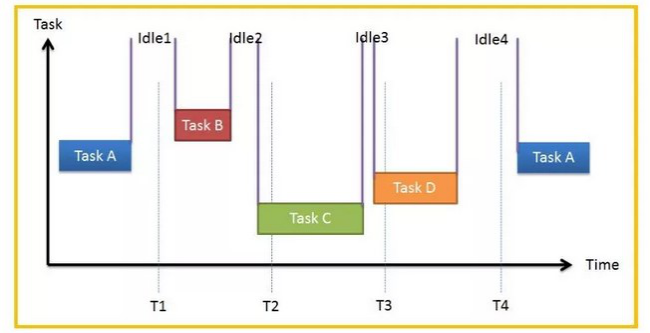“One after another, readers have asked some questions about RTOS, such as: Do I want to learn RTOS now? What are the benefits of learning RTOS? Should my project run RTOS?
“
One after another, readers have asked some questions about RTOS, such as: Do I want to learn RTOS now? What are the benefits of learning RTOS? Should my project run RTOS?
・・・・・・ etc. Some questions about RTOS, in fact, in the final analysis, you don’t know enough about RTOS, and your experience in project development is not enough.
For these friends, I would like to share some related content today:
In embedded systems, there are many ways to implement task scheduling. In a small system with limited functions, an infinite loop is sufficient to realize the system function. When software designs become large and complex, designers should consider real-time operating systems.

Here are 8 reasons to use RTOS:
1. Hard real-time response
The RTOS based on priority preemption performs priority scheduling according to the real-time requirements of tasks. Tasks with strict timing constraints can be prioritized, improving application responsiveness to time-critical events.
2. Maximize system performance
For large, complex embedded applications, using an event-driven RTOS instead of a polling-based hyperloop structure can generate a more efficient design, with a smaller memory footprint, and the application can gain more processor time .
3. Reduce complexity
RTOS allows applications to be divided into small autonomously running tasks. Tasks execute in their own context and do not depend on other tasks or schedulers.
4. Peak load management
RTOS provides an efficient method for managing peak activity in the system. Higher priority is assigned to tasks performing peak load activities, ensuring that they access the processor during critical times during which lower priority tasks are delayed.
5. Tightly integrated middleware
The modular design of RTOS makes it easy to add middleware. Middleware components are added in a task and driven manner. They communicate with other tasks using the resources provided by the RTOS. Scheduled by RTOS based on corresponding events.
6. Larger development team
Each task can be thought of as a project. Input and output are defined by the resources (queues, semaphores, etc.) provided by the RTOS. Defining the system as individual tasks makes it easier to deploy more developers to a project.
7. Easy to debug and verify
The system is divided into tasks with well-defined functions that do not depend on other tasks. Each task can be easily debugged and verified before the entire system is integrated.
8. Code reuse
Modular design in RTOS systems encourages the creation of software functions as independent, proven tasks. Its independence makes it easy to reuse these modules in other designs.
Of course, the public needs for the above reasons, if your project has special needs, are another matter.
The Links: LP150X09-B5K8 6MBI50L-060

0 Comments for “8 reasons to use RTOS in embedded systems”